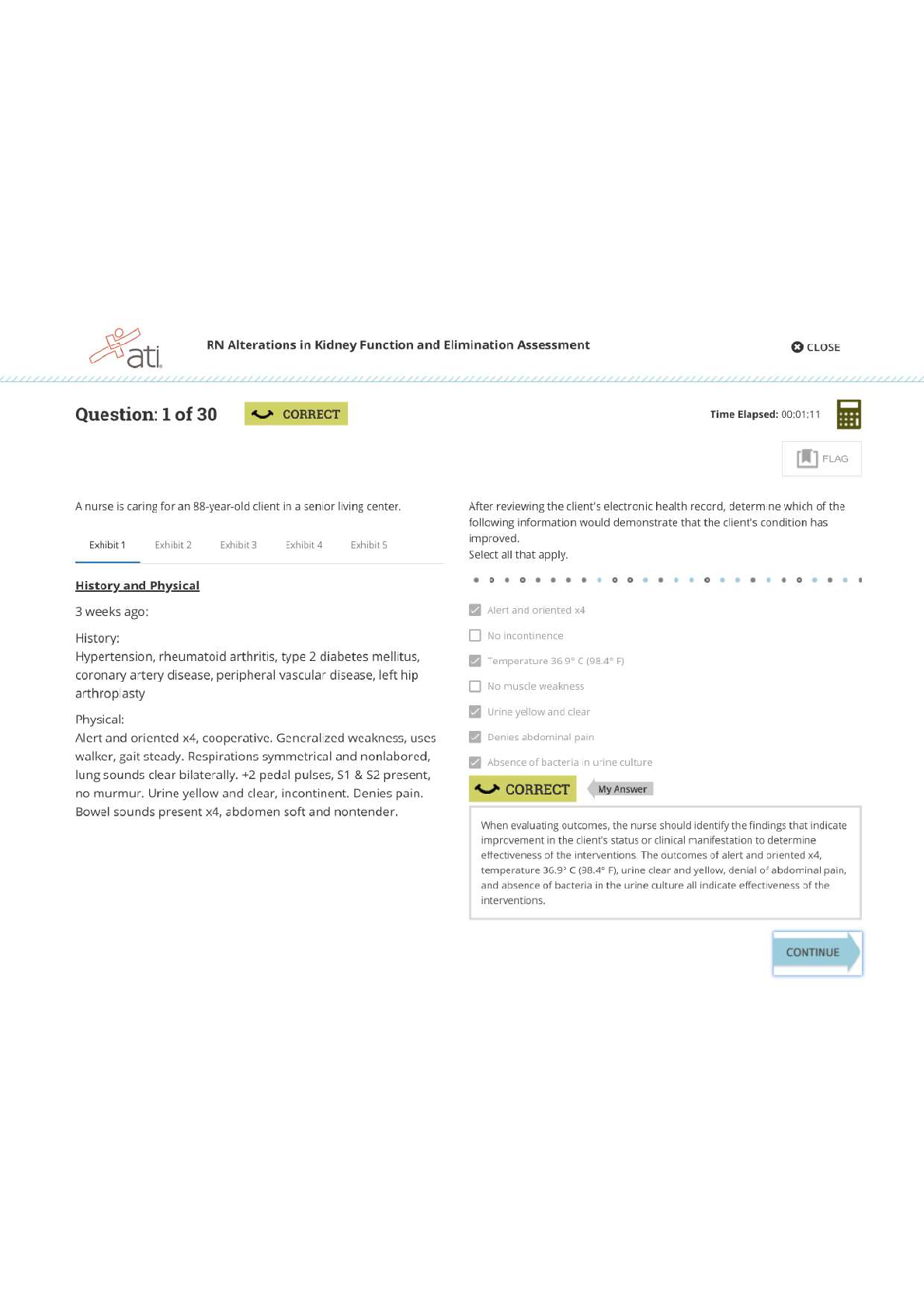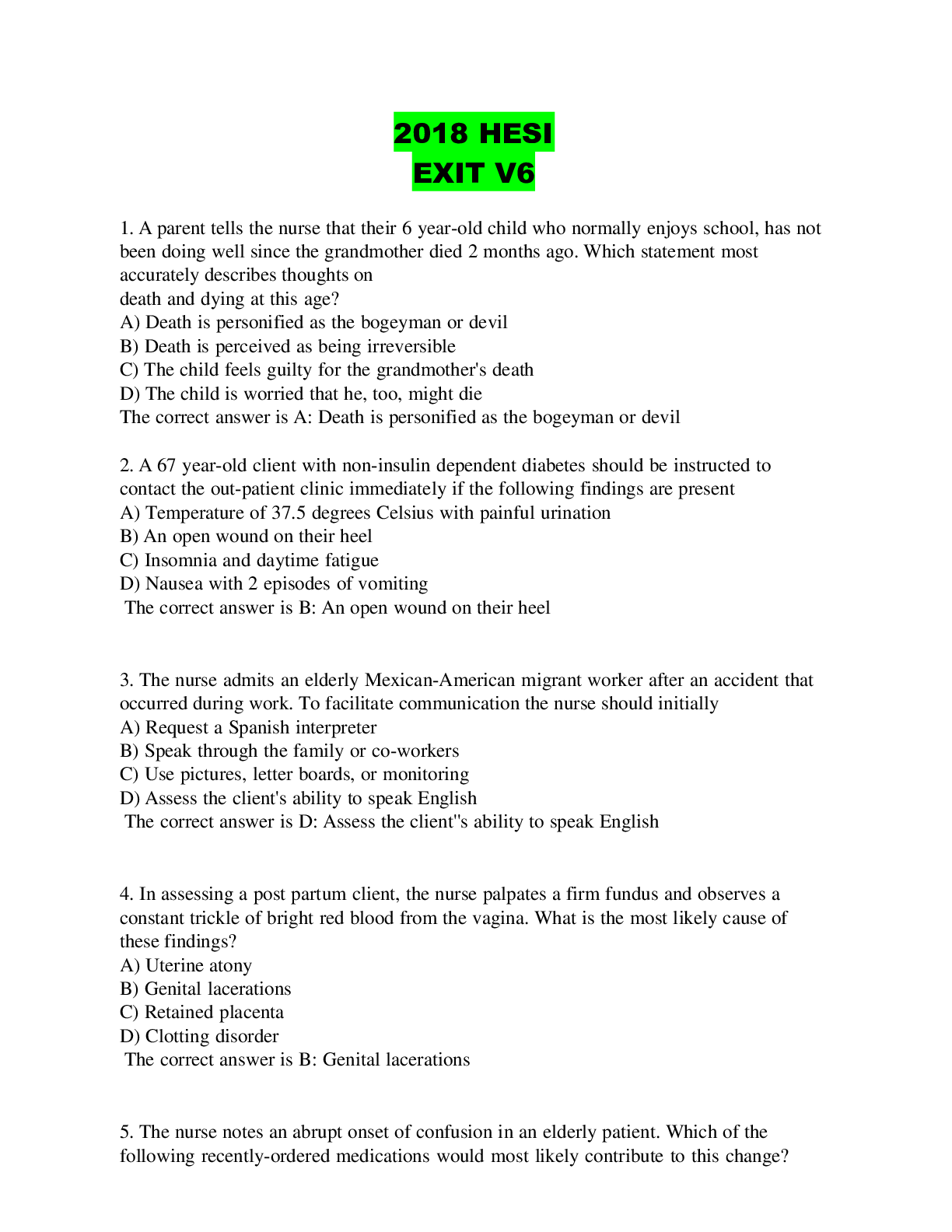Mercer UniversityNUR 65606560 Midterm
Document Content and Description Below
Question 1 S. is a 59-year-old female who has been followed for several years for aortic regurgitation. Serial echocardiography has demonstrated normal ventricular function, but the patient was los... t to follow-up for the last 16 months and now presents complaining of activity intolerance and weight gain. Physical examination reveals a grade IV/VI diastolic aortic murmur and 2+ lower extremity edema to the midcalf. The AGACNP considers which of the following as the most appropriate management strategy? A. Serial echocardiography every 6 months B. Begin a calcium channel antagonist C. Begin an angiotensin converting enzyme (ACE) inhibitor D. Surgical consultation and intervention C. Begin an angiotensin converting enzyme (ACE) inhibitor The patient is having grade 6 diastolic aortic murmur. The murmur is not accompanied by any serious complications because there is a 2+ lower extremity edema to the midcalf. Angiotensin converting enzyme (ACE) inhibitor lowers the blood pressure. High blood pressure often worsens the underlying conditions that cause heart murmurs. Beginning an angiotensin converting enzyme (ACE) inhibitor will help in the management of diastolic aortic murmur by dealing with the conditions that cause heart murmurs. A surgery would be used only when the valves are damaged or leaky Reference https://www.mayoclinic.org/diseases-conditions/heart-murmurs/diagnosis-treatment/drc20373175 Question 2 An ascending thoracic aneurysm of > 5.5 cm is universally considered an indication for surgical repair, given the poor outcomes with sudden rupture. Regardless of the aneurysm’s size, all of the following are additional indications for immediate operation except: A. Comorbid Marfan’s syndrome B. Enlargement of > 1 cm since diagnosis C. Crushing chest pain D. History of giant cell arteritis C. crushing chest pain Prophylactic surgery is recommended when the aorta reaches a diameter of 5.5 cm, when the patient falls under the Marfan syndrome bicuspid aortic valve category, when the enlargement is greater than 0.5 cm, and when the patient has a history of fast-growing cell arteritis. Marfan syndrome is a connective tissue condition that involves the respiratory, skeletal, cardiovascular and ocular systems. It is one of the most serious complication of aortic valve regurgitations and needs an immediate surgery. For this reason, a crushing chest pain is the odd one out Reference https://www.sciencedirect.com/science/article/pii/S235290671500010X [Show More]
Last updated: 1 year ago
Preview 1 out of 63 pages

Reviews( 0 )
Document information
Connected school, study & course
About the document
Uploaded On
Sep 28, 2021
Number of pages
63
Written in
Additional information
This document has been written for:
Uploaded
Sep 28, 2021
Downloads
0
Views
52





.png)
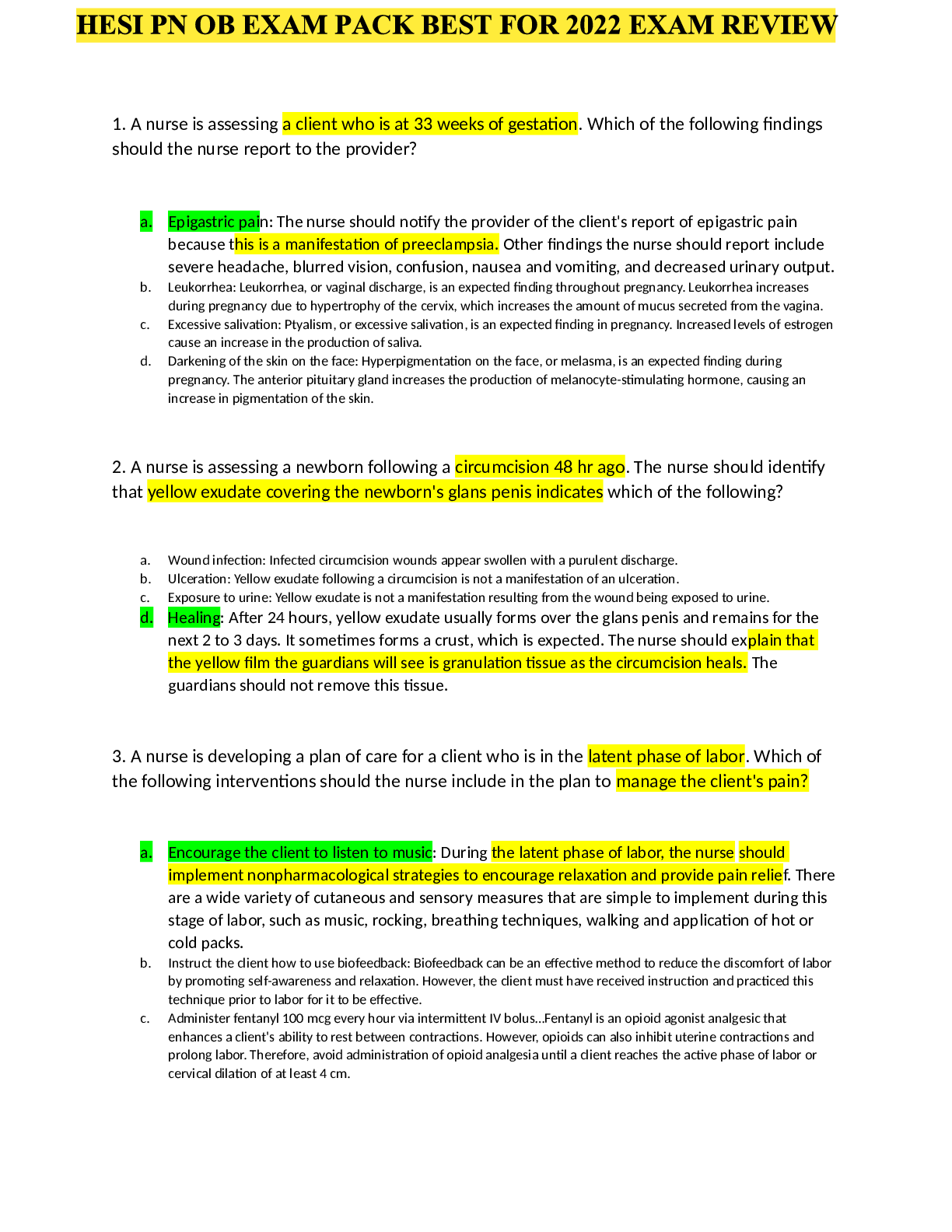
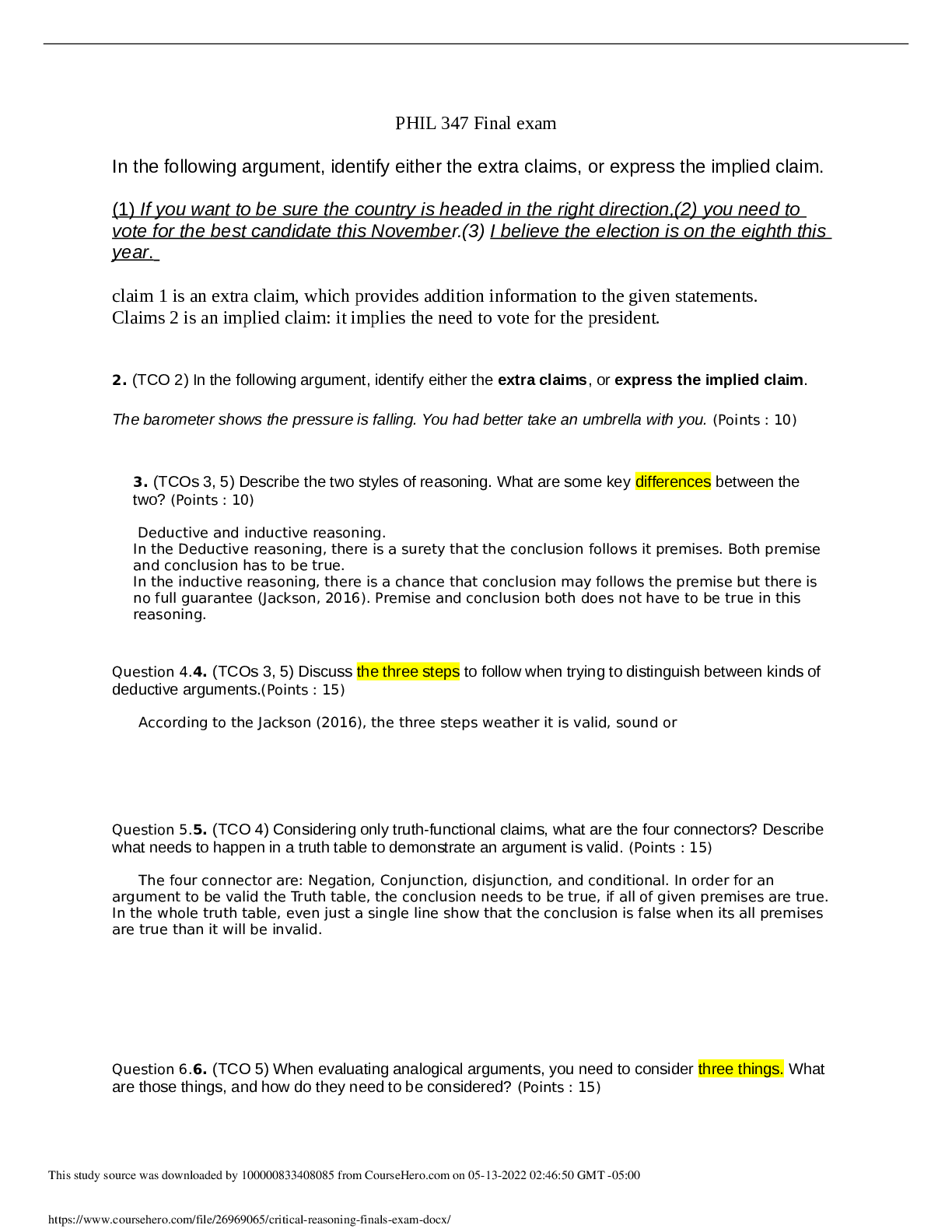

.png)
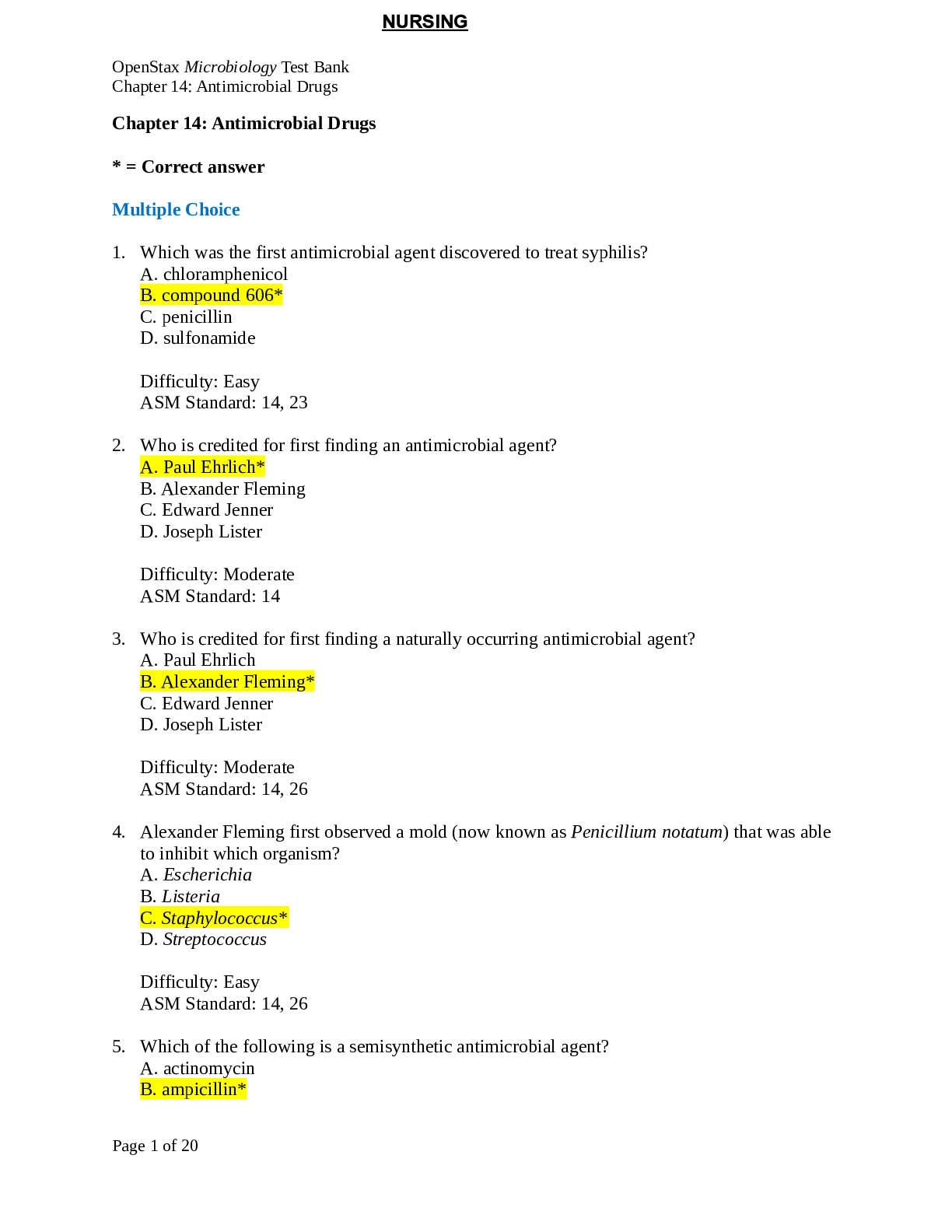
.png)


.png)








